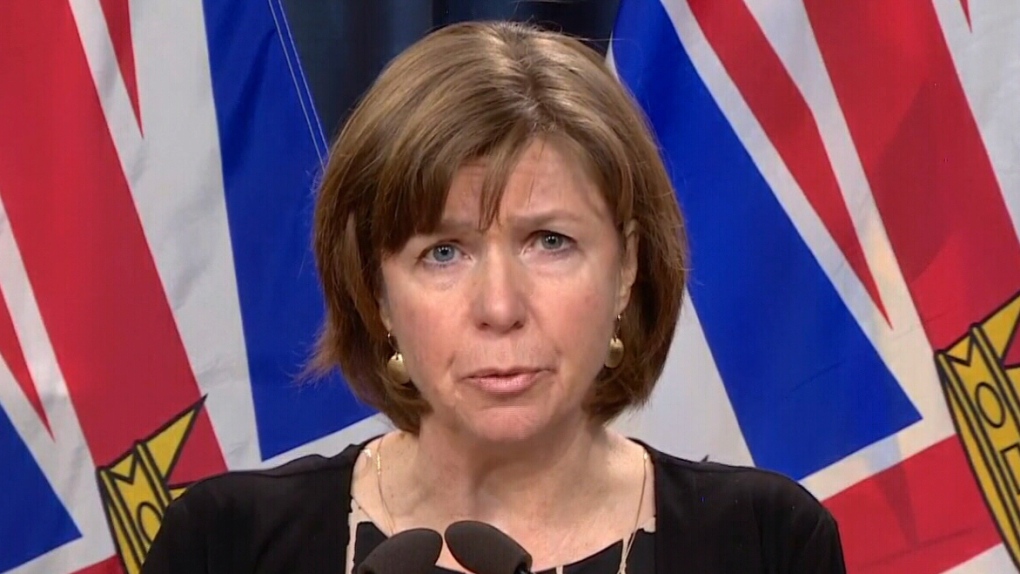B.C. introduces legislation to reduce poverty rate by 60% over next decade

David Kennedy says his recent retirement came as a lifestyle shock, especially financially.
The 67-year-old Nanaimo, B.C., man said he faced housing difficulties after retirement, and with the high cost of food and fuel, every month is financially challenging.
The B.C. government introduced legislation Tuesday setting 10-year targets to substantially reduce poverty in the province, focusing on children, while also making a first-time commitment to cut seniors' poverty by 50 per cent.
The legislation would change three laws to set higher targets to cut poverty, ease employment requirements for people on income and disability assistance and provide more supports for people, said Sheila Malcolmson, social development and poverty reduction minister.
The amending legislation commits B.C. to cut the overall poverty by 60 per cent over the next decade, including reducing child poverty by 75 per cent and seniors' poverty by 50 per cent.
Kennedy said he backs any government change to help him increase his income and offer support.
“I'm a recent senior and I found out the difficulty of the housing market,” he said at a news conference with Malcolmson and other people facing poverty issues. “I wasn't ready for that.”
Local advocates helped him find a place to rent, but daily life continues to be a struggle, said Kennedy.
“Anything that helps,” he said. “I've found that what I've got coming in from pensions and stuff makes it really rough to try and make ends meet monthly. It's part of your thinking all the way. You're always having to make up for that amount that isn't coming in.”
Malcolmson said the province has exceeded its original poverty reduction goals set in 2018 to reduce the overall poverty rate in B.C. by 25 per cent and child poverty by 50 per cent.
The government's most recent report on poverty reduction said that since 2021 B.C.'s total poverty rate dropped by 45 per cent from 2016 levels and child poverty is down by 54.6 per cent.
But the report said there were still 447,000 people in poverty in 2021, including 70,000 children
“But we know anecdotally that people are under considerably more pressure than they were in 2021,” Malcolmson said. “The need for us to do more is absolutely clear.”
She said more people are using food banks, the number of people on income assistance is rising and emergency assistance grant applications have increased.
“All those metrics tell us people are hurting more than in 2021,” said Malcolmson. “That's why we're deepening our efforts.”
She said the legislation does not come with increases in government assistance or disability rates, which the NDP government has raised five times since 2017.
Malcolmson said the government is preparing to release its poverty reduction strategy later this year and suggested assistance rate increases could be included.
“We're always trying to move the dial,” she said.
Green Party Leader Sonia Furstenau said she will push for an immediate raise in disability and income assistance rates.
“At a time when people on disability and income assistance are falling far below the poverty line, this bill adds even greater bureaucratic demand with no recognition of the way in which these assistance programs are trapping people in poverty,” she said in a statement.
“We need entirely new thinking around how people with disabilities and on income assistance are served so programs are a path out of poverty and not a prison.”
This report by The Canadian Press was first published March 5, 2024.
CTVNews.ca Top Stories

Mark Carney reaches out to dozens of Liberal MPs ahead of potential leadership campaign
Mark Carney, the former Bank of Canada and Bank of England governor, is actively considering running in a potential Liberal party leadership race should Justin Trudeau resign, sources tell CTV News.
'I gave them a call, they didn't pick up': Canadian furniture store appears to have gone out of business
Canadian furniture company Wazo Furniture, which has locations in Toronto and Montreal, appears to have gone out of business. CTV News Toronto has been hearing from customers who were shocked to find out after paying in advance for orders over the past few months.
WATCH Woman critically injured in explosive Ottawa crash caught on camera
Dashcam footage sent to CTV News shows a vehicle travelling at a high rate of speed in the wrong direction before striking and damaging a hydro pole.
A year after his son overdosed, a Montreal father feels more prevention work is needed
New data shows opioid-related deaths and hospitalizations are down in Canada, but provincial data paints a different picture. In Quebec, drug related deaths jumped 30 per cent in the first half of 2024, according to the public health institute (INSPQ).
Rideau Canal Skateway opening 'looking very positive'
As the first cold snap of 2025 settles in across Ottawa, there is optimism that the Rideau Canal Skateway will be able to open soon.
Much of Canada is under a weather alert this weekend: here's what to know
From snow, to high winds, to extreme cold, much of Canada is under a severe weather alert this weekend. Here's what to expect in your region.
Jimmy Carter's funeral begins by tracing 100 years from rural Georgia to the world stage
Jimmy Carter 's extended public farewell began Saturday in Georgia, with the 39th U.S. president’s flag-draped casket tracing his long arc from the Depression-era South and family farming business to the pinnacle of American political power and decades as a global humanitarian.
'A really powerful day': Commemorating National Ribbon Skirt Day in Winnipeg
Dozens donned colourful fabrics and patterns Saturday in honour of the third-annual National Ribbon Skirt Day celebrated across the country.
Jeff Baena, writer, director and husband of Aubrey Plaza, dead at 47
Jeff Baena, a writer and director whose credits include 'Life After Beth' and 'The Little Hours,' has died, according to the Los Angeles County Medical Examiner.
































